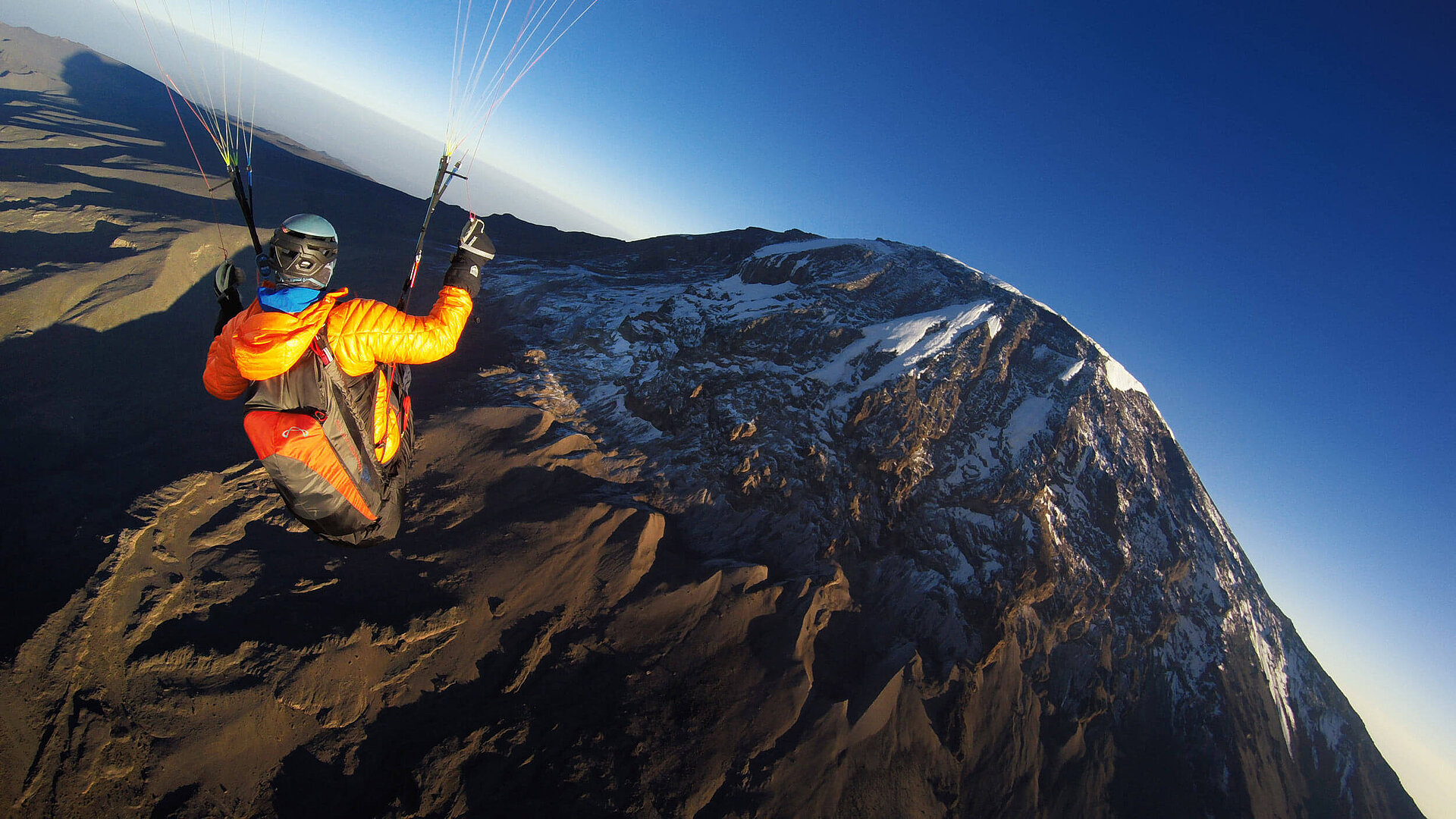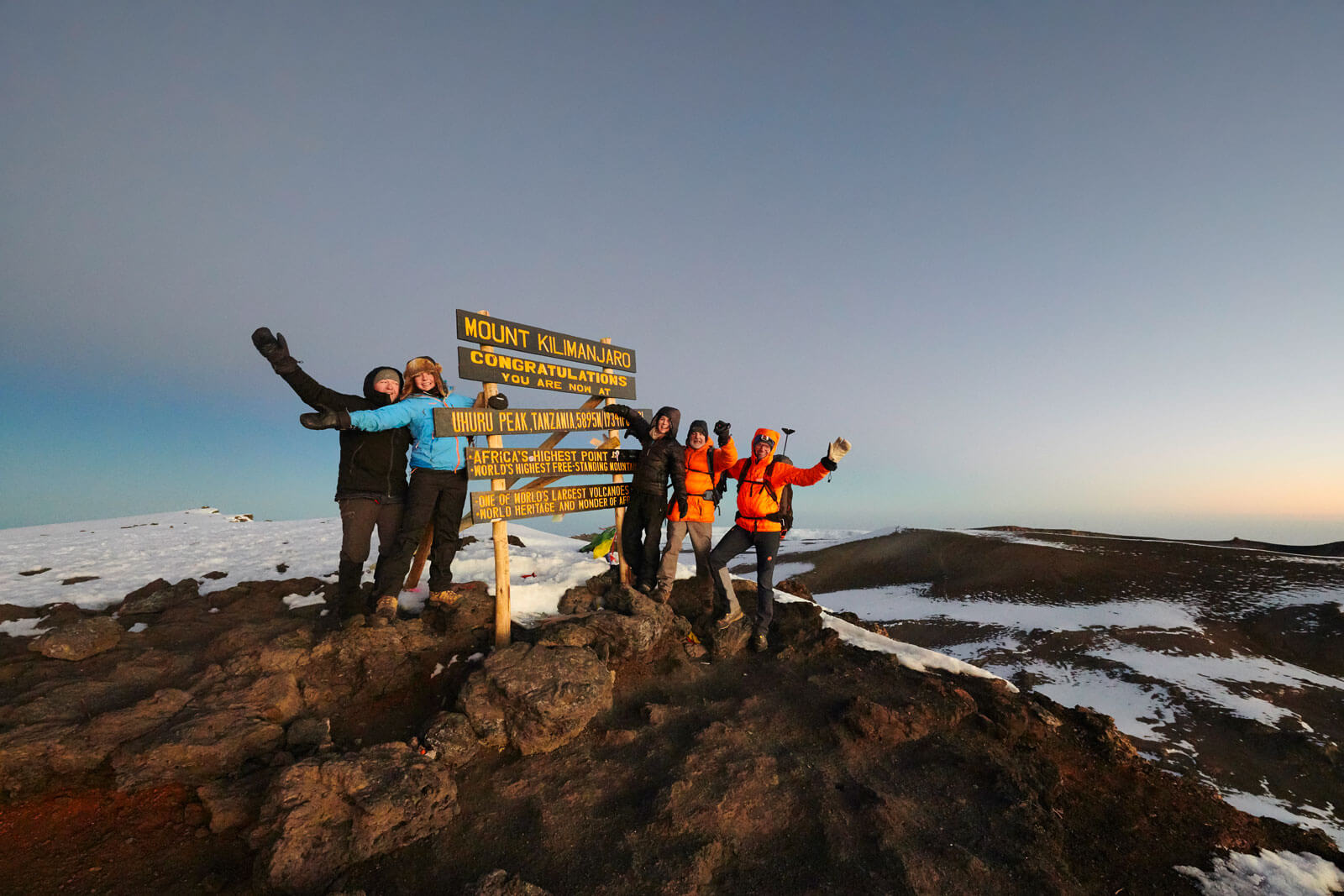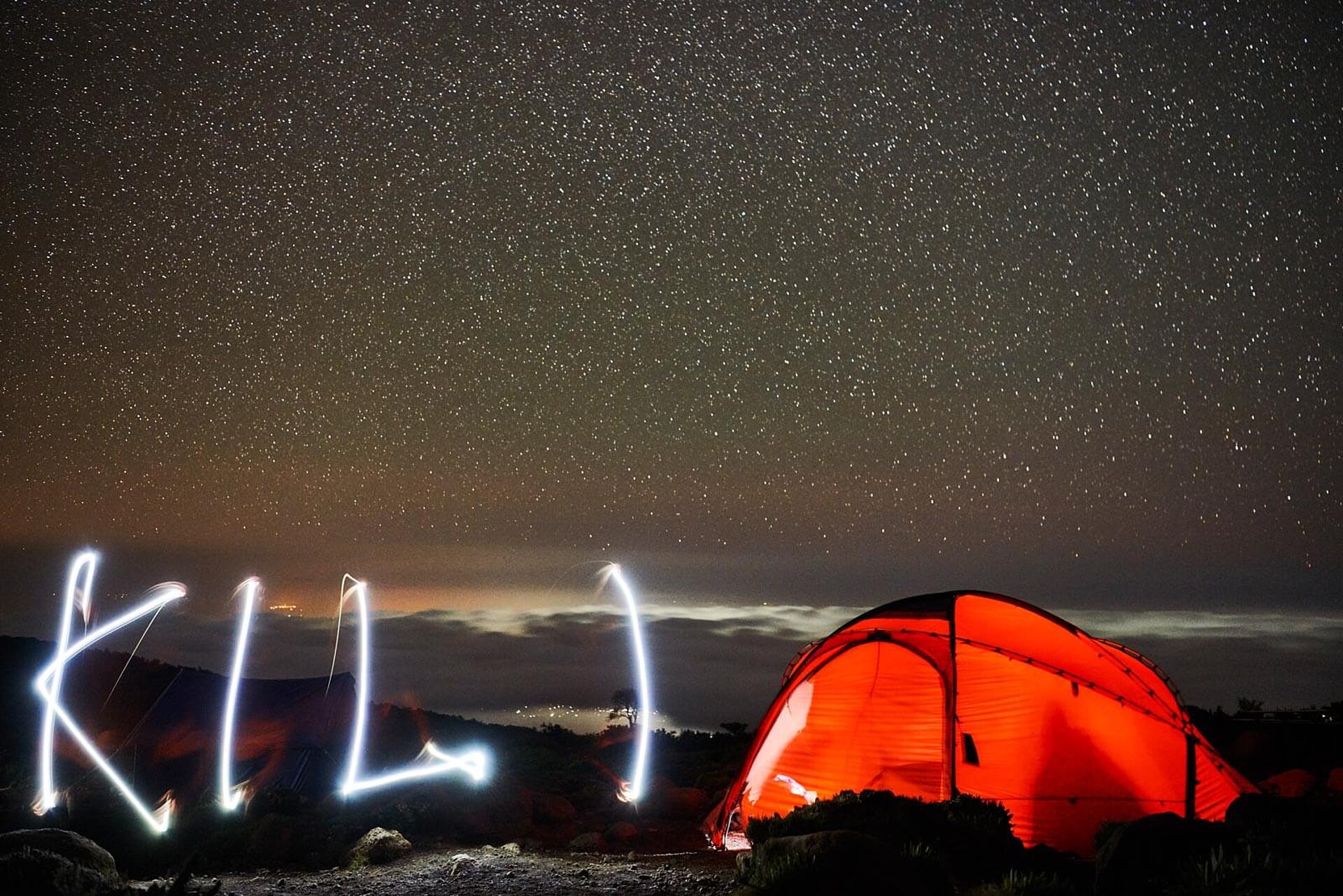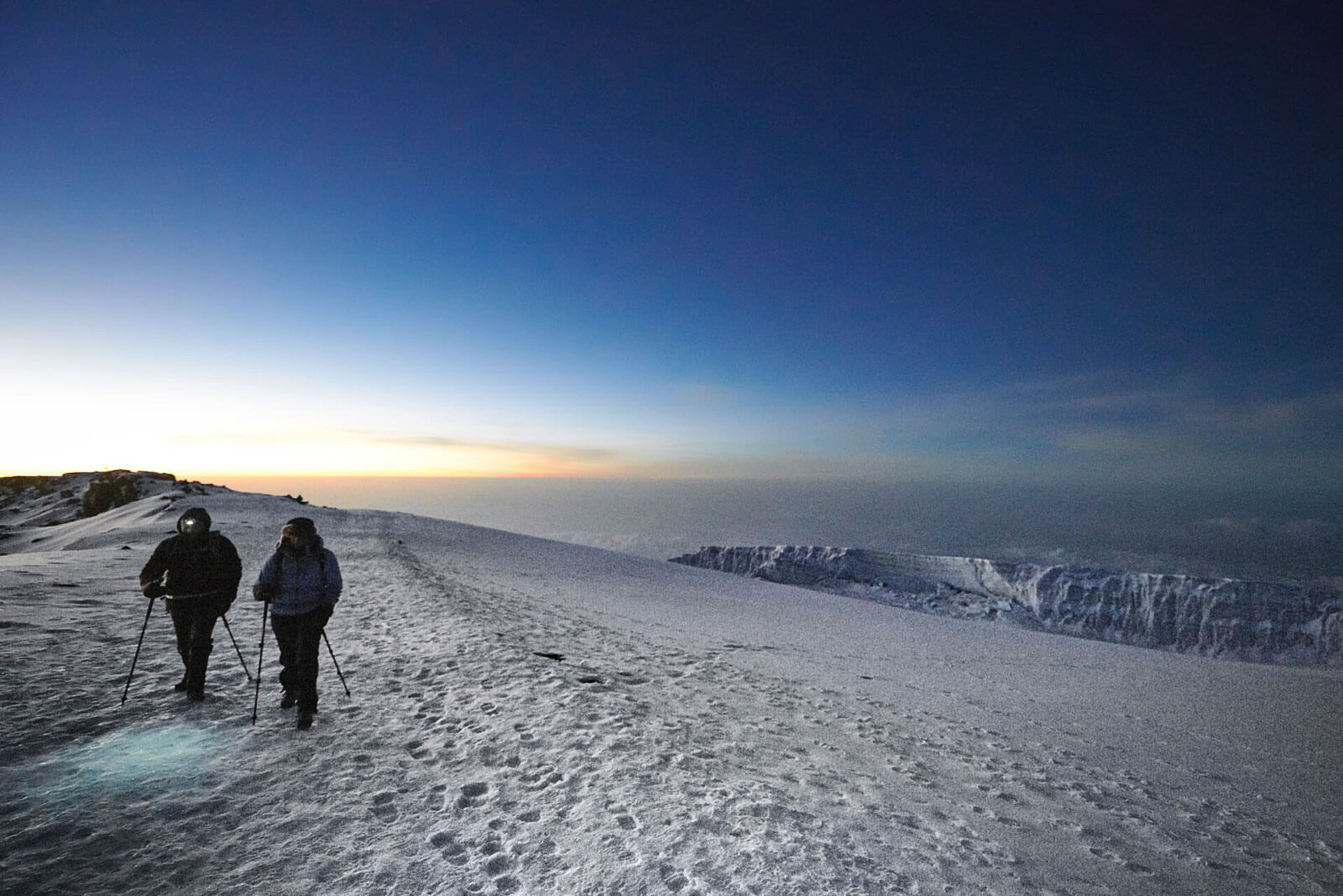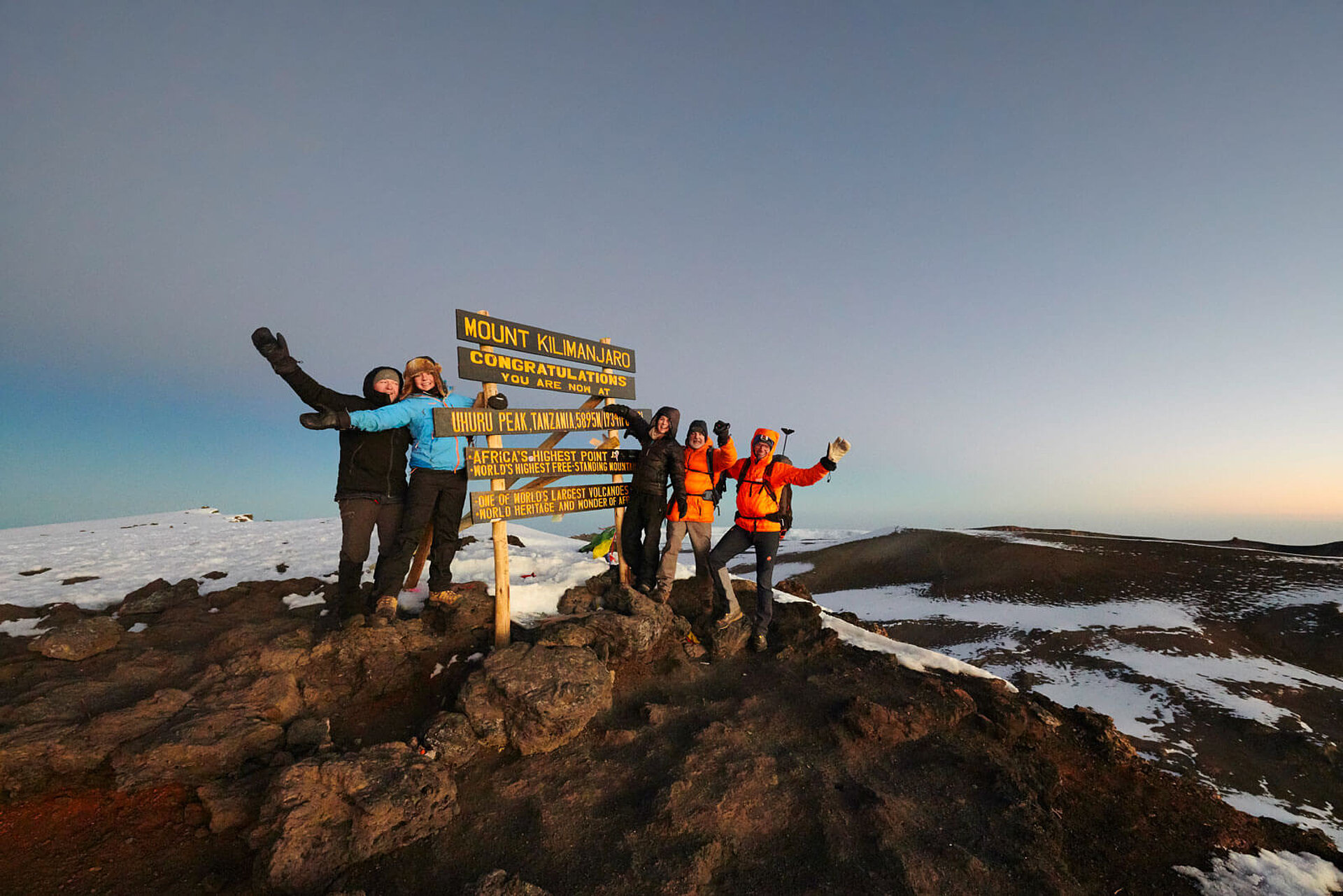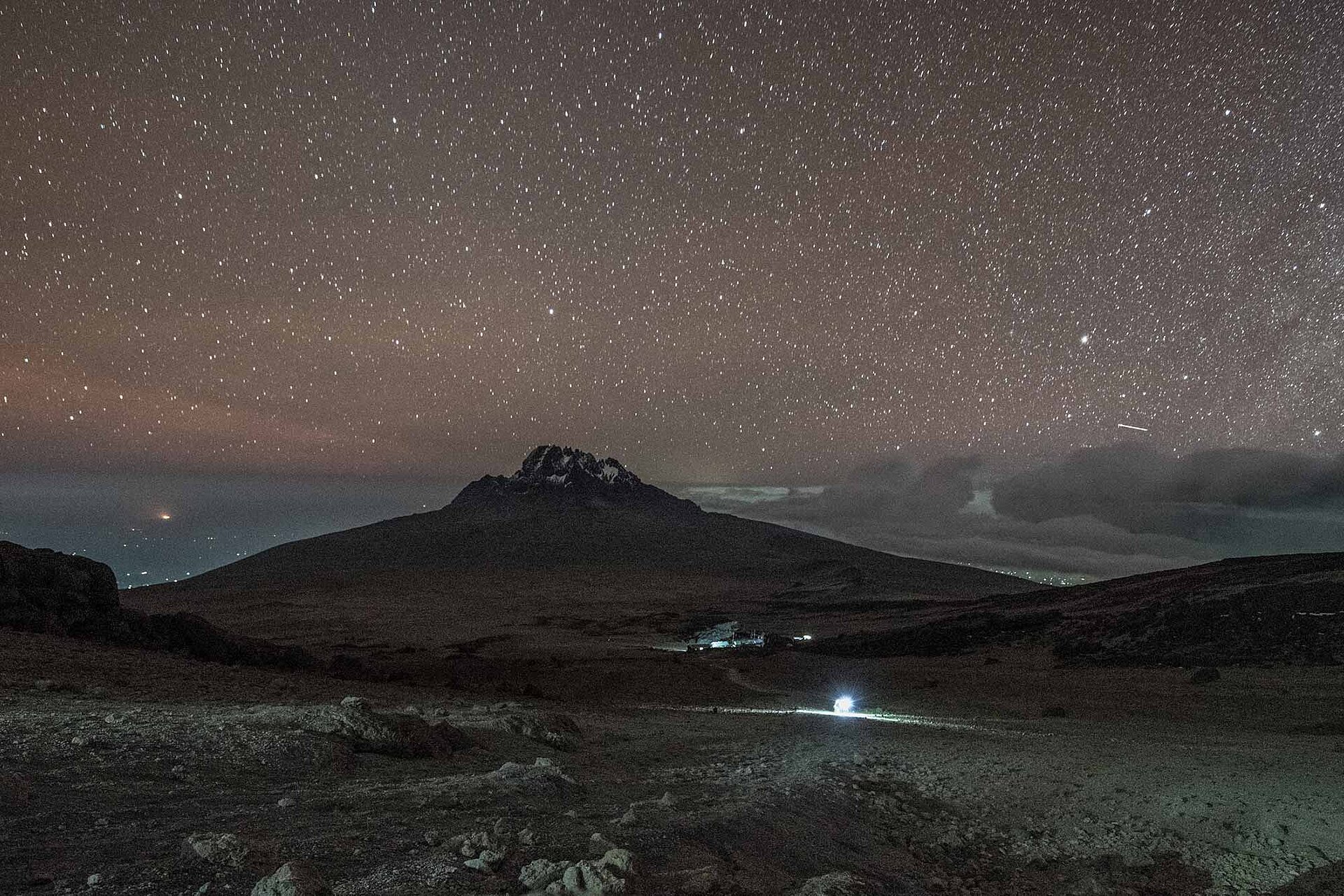At 5,895 metres the Kilimanjaro Massif is the highest place in Africa. If you want to fly here you need permission. Since 2017 this has been reasonably easy to get. The large height difference of almost 5,000 metres, the weather and the thick ancient forest at the foot of the mountain certainly presents the paraglider pilot with a demanding task. Julian Beermann found out about the experience.

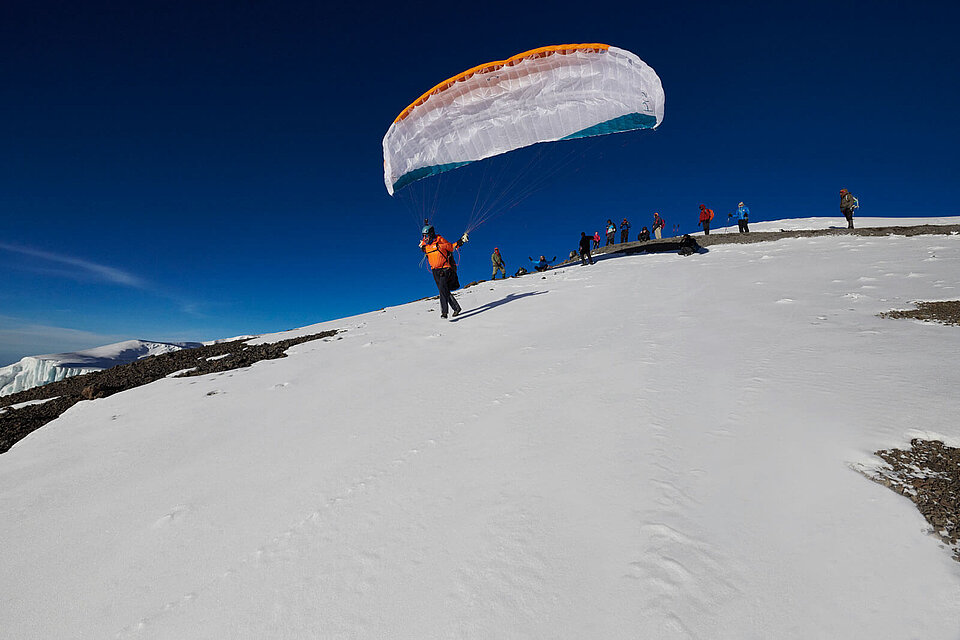
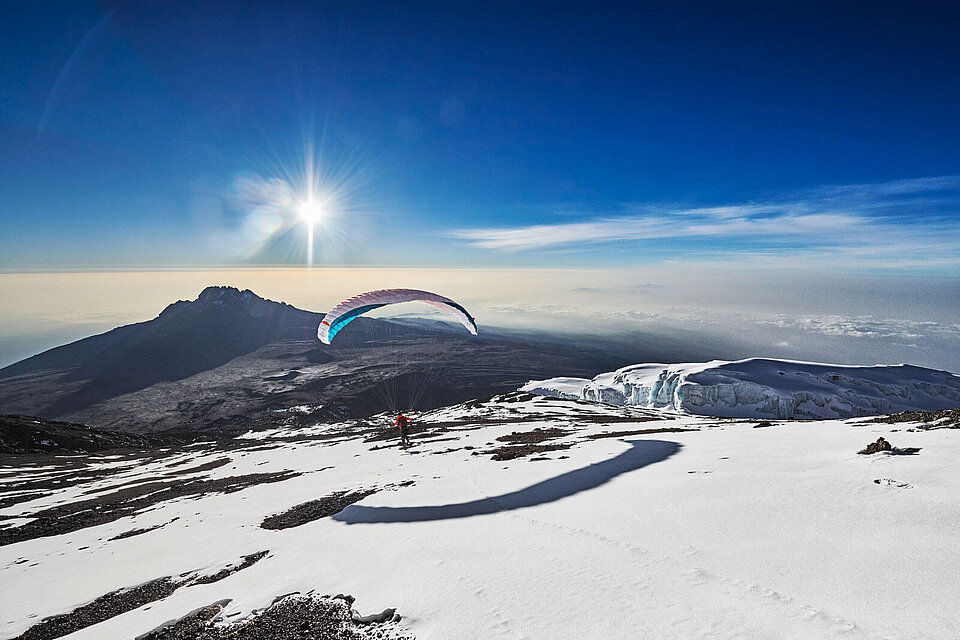
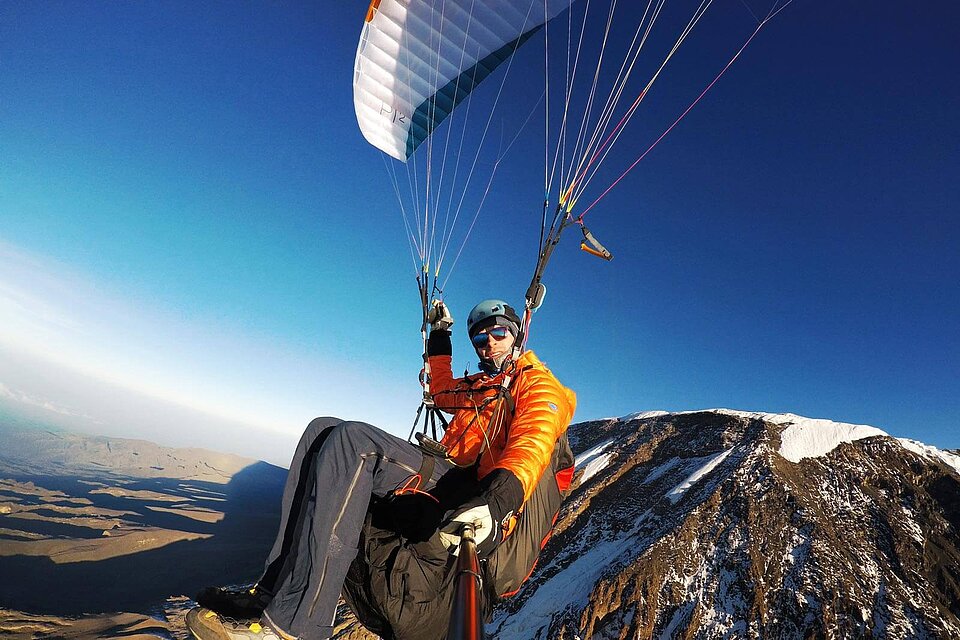
A tiny takeoff window
Julian had already tried to fly from Africa’s highest mountain in 2017, with the special permit, but the weather had drawn a line through the plans of the Swiss mountain guide and his guest. The Kilimanjaro Massif lies in the equatorial climatic trough, so there’s often not much regional wind, but overdevelopment during the day means that a takeoff must be in early morning.
“Only those who are ready to go at the summit by sunrise have a chance of good flying conditions”, says Julian. Those who are lucky enough to achieve this will experience a flight of superlatives, over an unique landscape.” In the distance stretches the land of the Masai with its wide, dry plains. Somewhat higher up the slopes lie banana, coffee and mango plantations, and natural woodland, while near the summit a moonscape of rocky rubble and glaciers dominates.”
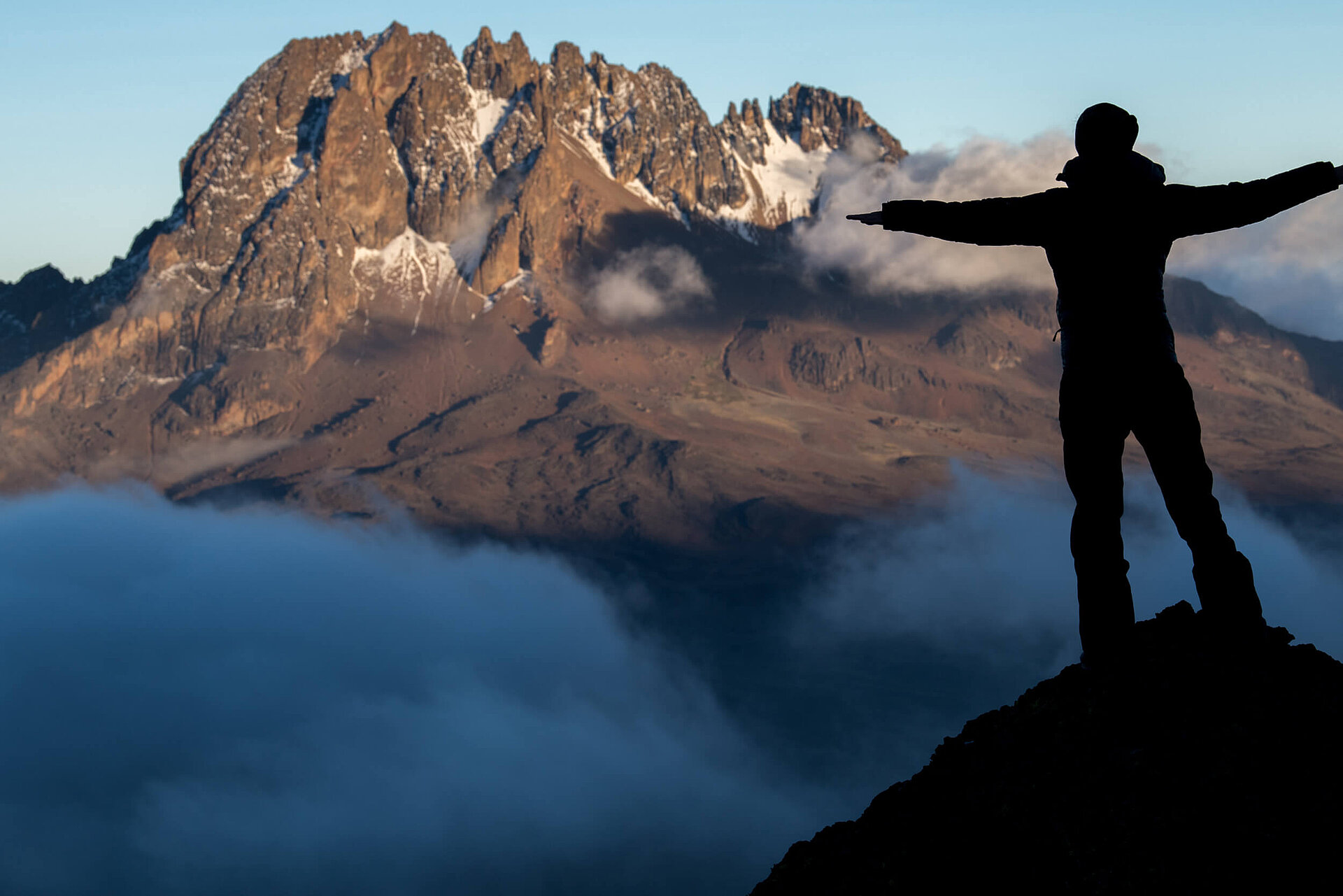
Acclimatisation is everything
Like every Hike & Fly the walk up comes before the takeoff. From the end of the last piece of road – depending on the route - there’s about 4,200 metres of altitude to be mastered. The climb can be described as technically easy, but adequate, physical adaptation to the considerable height is decisive for success. To minimise the serious risk of altitude sickness seven days are recommended. Because he had not been able to take off with his guest on this first attempt it was clear to Julian that he would try it again on his next Kili visit. The effort required for the climb was nothing new for him; after all, he had taken guests up six times to stand on the highest mountain in Africa. And on this seventh ascent with a group of guests and other mountain guides he took his glider along. If his attempt was successful the other guides could take the guests down safely. Whether this would actually work depended on a number of factors.
Planning to the last detail
So it’s no wonder that Julian plans his flight to the smallest detail. Besides the weather situation the wide-ranging virgin forest at the foot of the mountain represented the greatest challenge. “On the lower, quite flat part, this forest still covers wide non-landable areas,” explains Julian. So during the planning he searched out possible landing spots and saved them in the GPS. By comparing the required glide ratio for a particular landing area with current performance during flight he would be able to estimate how much reserve he had to the next possible place.
You can’t prepare for everything
Something he couldn’t prepare for was the actual feeling of lifting off from Kibo, the central summit crater. Conditions in the early morning were perfect, light wind coming up. A takeoff this time was not an obstacle. The guests helped Julian lay out his wing on a small snow bank. Then a couple of small steps, the crispy wing rustles – and he lifts off. “An overwhelming feeling that hadn’t been planned for, and that I didn’t expect,” remembers Julian. From the snowfield he goes over the jagged edge of the crater towards the endless expanse of Africa. Now the whole crater lies beneath his feet, with its long desolate rim. In the distance the forest expands. “The mood in this morning light was quite unique. The sky seemed to belong just to me”, says Julian.

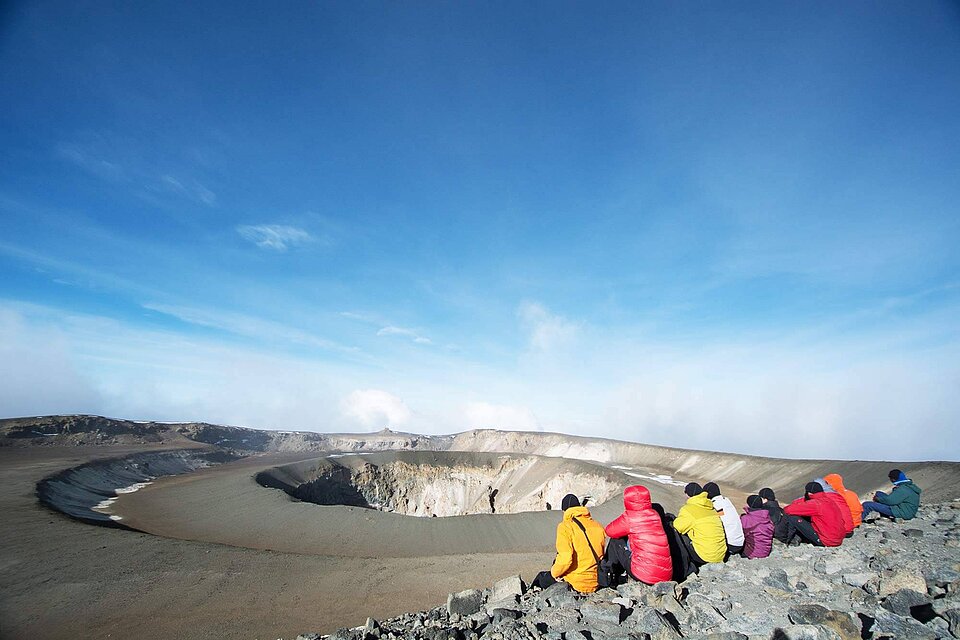
Takeoff clearance from the tower
But it wasn’t exactly like that. Before departure Julian had to get takeoff clearance from the tower at Kilimanjaro Airport. Because he would overfly the flatlands below at about 3,500 m he heard the tower, on the radio, tell an approaching airliner to watch out for him, and gave it a reroute anyway. “A situation that you do not often experience as a paraglider pilot, presumably”, says a grinning Julian. After a good hour, about 30 kms flown and 5000 metres down, he landed safely below 800 m. He looked back. What a flight. What an experience! One thing is clear: he will remember it his whole life.
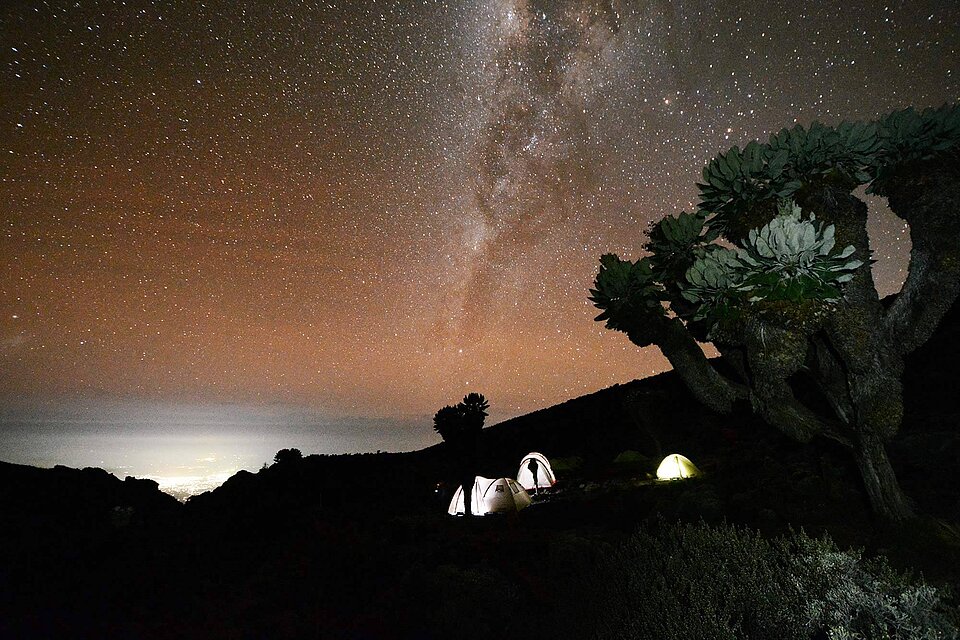
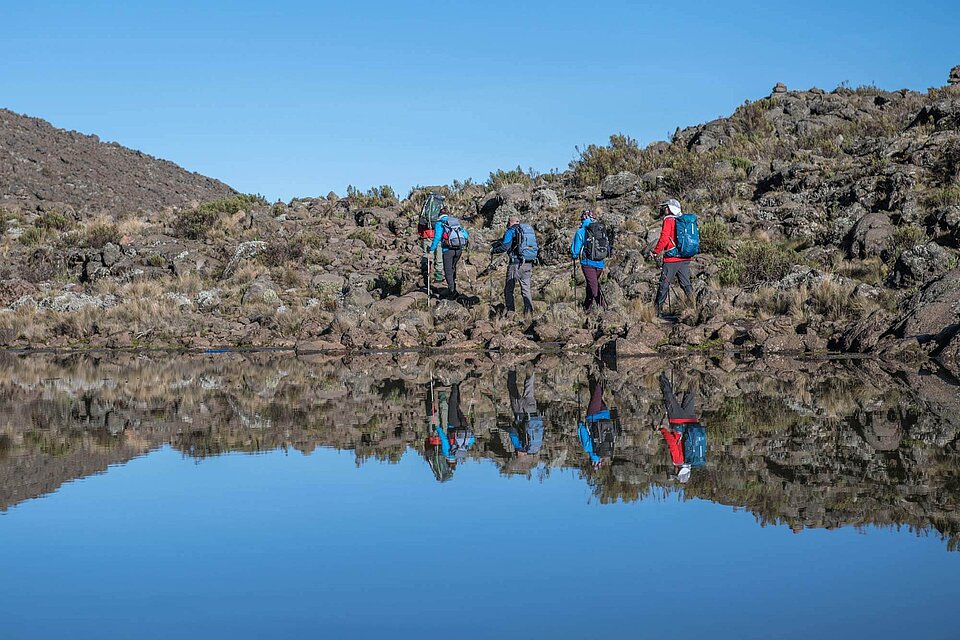
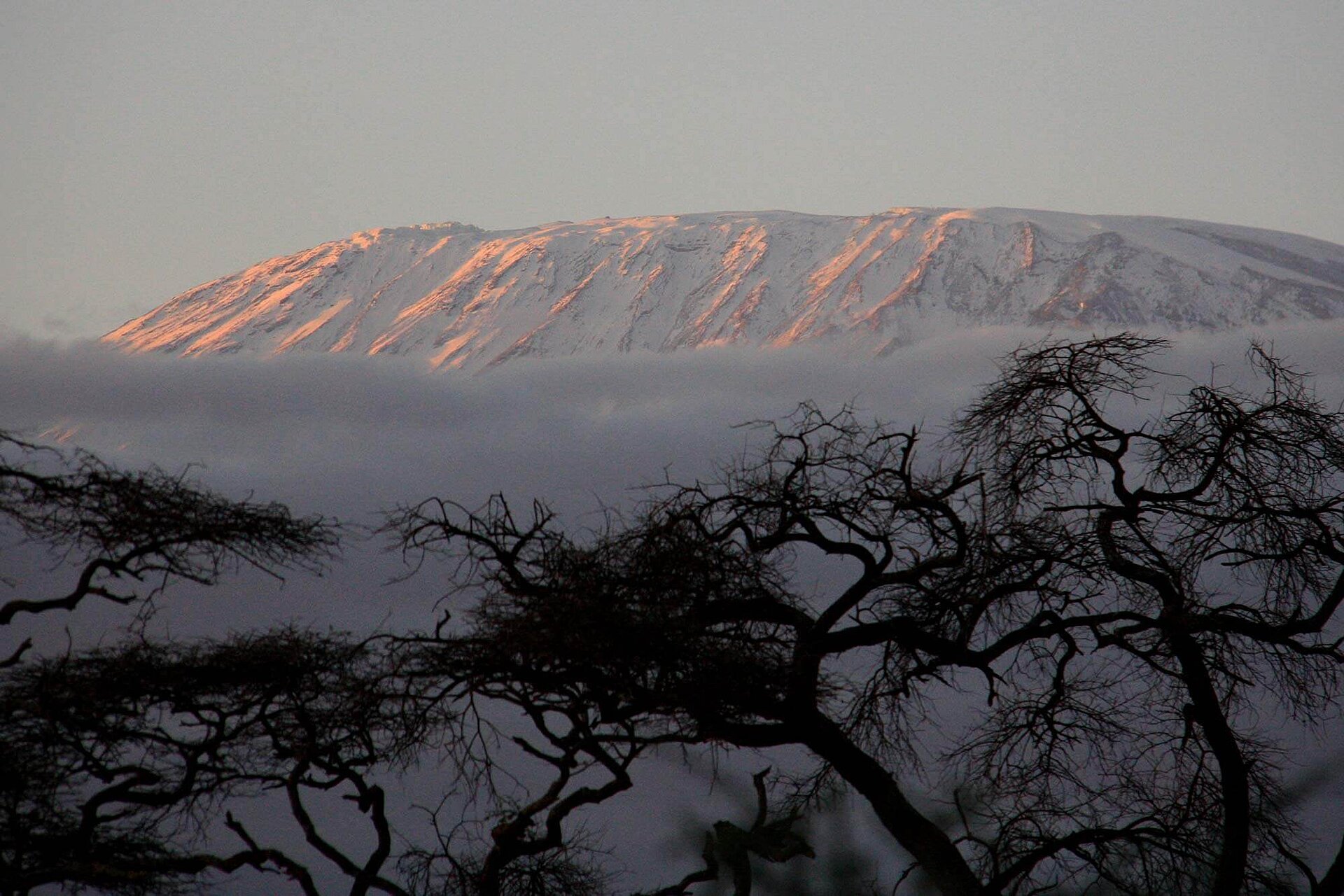


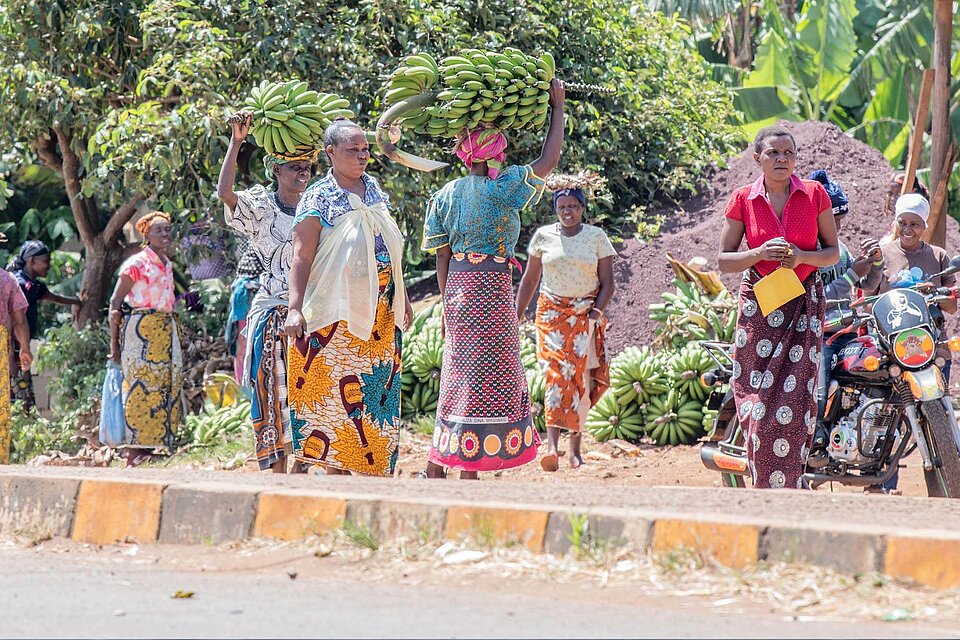

The Equipment
The Flight Track
360 Degrees Inflight View
About Julian

Julian Beermann
Julian Beermann, born 1985, is a mountain guide and helicopter pilot. He has been flying the paraglider since 2010.
